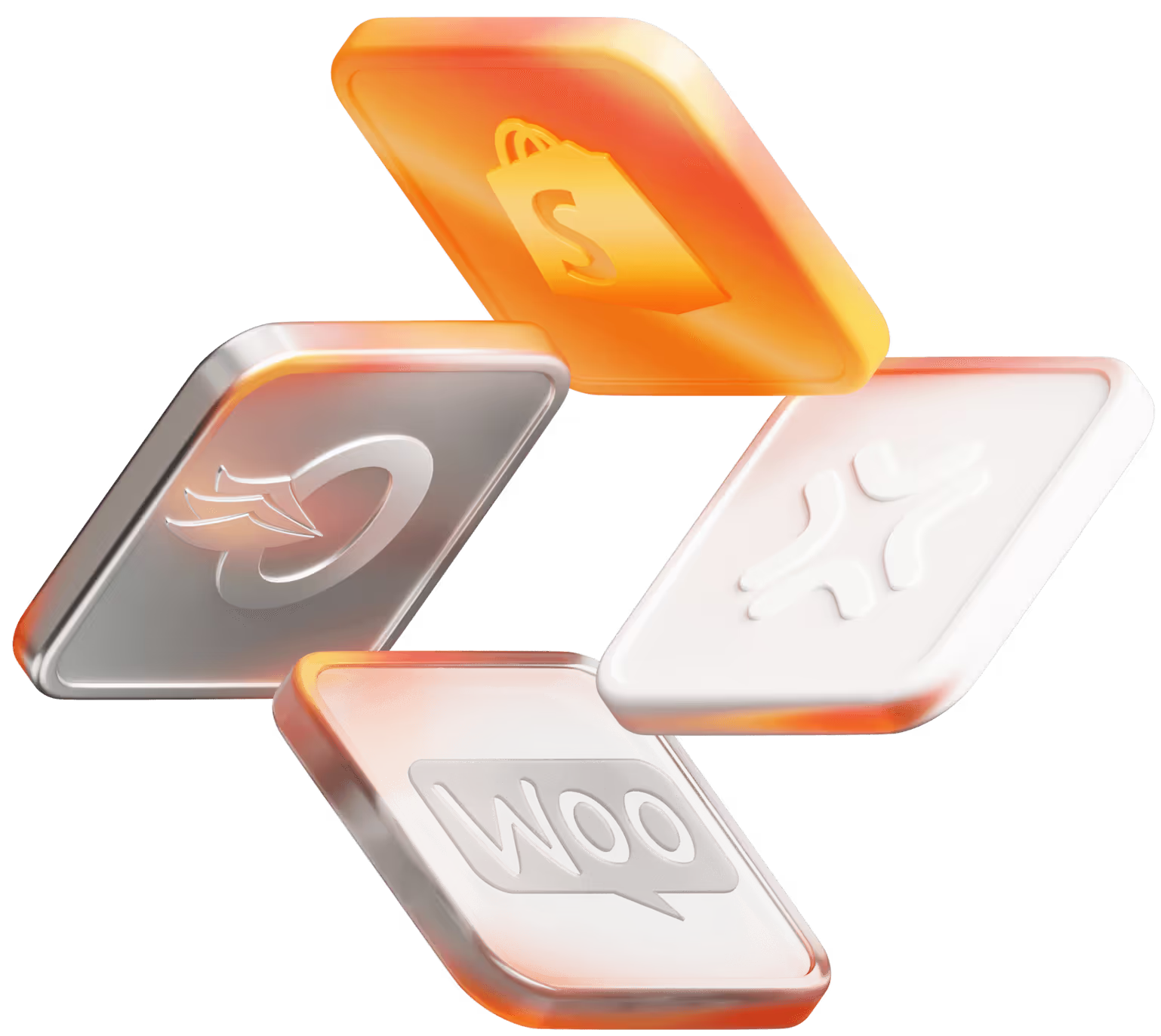ERP system for e-commerce: when do you need one?
ERP stands for enterprise resource planning. It's a type of software system that can streamline multiple workstreams in a company. At first glance, it can seem like a good addition for every business, but ERPs are best suited to specific types of e-commerce businesses. Find out which in this article.

No matter what size your e-commerce business is, making sure everything runs smoothly every day is always a complex, time-consuming task. That’s why many e-commerce companies turn to enterprise resource planning (ERP) software to help streamline their operations.
Could an ERP be the solution that your business needs to overcome complexity, lighten workloads and speed up processes that are crucial to your success? Or would it not be worth the cost for your business at this point?
To help you decide whether an enterprise resource planning system is right for your e-commerce business, this article walks you through the ins and outs of implementing an ERP system. We will explain:
- How do ERP systems work in e-commerce?
- 5 Key features of ERPs for e-commerce brands
- Advantages of using an ERP
- Disadvantages of using an ERP
- What types of e-commerce businesses can benefit from an ERP system?
- 3 Signs you should implement an ERP
- 3 signs you probably don’t need to use an ERP
- ERP alternative: how medium-sized brands can benefit from a tool stack rather than an ERP
How do ERP systems work in e-commerce?
Every successful e-commerce business relies on coordination between many different groups of people, whether it’s your company’s internal departments, your supply chain network, logistics partners or other service providers. ERPs are software applications that are made for linking up all parts of the supply chain, including inventory management, order processing, and shipping.
An ERP provides a single digital platform that connects all the departments and functions within your company. They usually include centralized databases that enable your employees from different teams to access and share information in real-time.
For example, an e-commerce ERP generally retrieves order information directly from your shop system and gives your employees from customer support, logistics or finance an easy interface where they can quickly check order statuses when needed.
ERPs also help information pass through automated workflows. For example, when your reverse logistics team receives an order returned by a customer, your ERP can automatically notify finance and trigger the refund process.
5 key features of ERP software for e-commerce brands
There are many different ERPs on the market. Some of the most commonly used ERPs in the e-commerce industry are SAP Business One, Microsoft Dynamics 365, Oracle Netsuite, Infor and Odoo.
ERPs usually have a modular structure, which means you can adapt them to include the features your business needs, and leave out features your business does not need. In general, any ecommerce ERP will include key features like these:
1. Invoicing
Your ERP can be configured to automate your invoicing process. This saves time and eliminates the risk of someone accidentally typing the wrong price, tax amount or customer information.
Automated invoicing also speeds things up: your invoices always go out on time, which means you have better control over your cash flow.
2. Customer relationship management (CRM)
ERPs include CRM features that help you enhance the customer experience and drive repeat business. That’s because they centralize your customer data into a single location, which enables you to provide personalized experiences, manage customer interactions and track customer behavior (such as order history) for targeted marketing campaigns.
3. Inventory management
ERPs give you real-time visibility into inventory levels. They can also provide accurate demand forecasting, which reduces the risk of stockouts while also minimizing carrying costs. This also helps ensure you are delivering to customers without unnecessary delays.
4. Shipping labels
ERPs help streamline your logistics by automatically generating shipping labels. You can integrate carrier interfaces directly into your ERP to seamlessly track orders and manage your shipments. This helps you make sure that customers receive their orders as smoothly as possible.
5. Manufacturing information
If your e-commerce company specializes in manufacturing or product assembly, an ERP can offer tracking raw material inventory, managing work orders and monitoring production schedules.

Advantages of ERP for e-commerce
ERPs can offer some strong advantages for many e-commerce companies. Some of the main advantages of using an e-commerce ERP system are:
Streamlined operations: Since ERPs create a smooth flow of information between teams, you avoid so-called “data silos” in which teams only have access to their own information, but there is no way to share with other teams. Some e-commerce companies who use ERPs say they also benefit from faster workflows, fewer human errors and easier administration.
Better oversight: Modern ERPs draw together all the various data streams from across your organization, so you have real-time information. This also enables you to perform data analysis, so you can spot trends, make data-driven decisions and manage stock levels more effectively, for example.
Scalability: Every e-commerce retailer wants their business to grow. But that growth brings even more complexity to your operations. ERPs are generally a scalable solution, which means they are built to accommodate increased transaction volumes, larger product ranges and additional sales channels as your business continues to expand.
Better customer experience: ERPs also enhance customer relations because they enable you to personalize customer communications, manage order fulfillment and provide better customer service.
Disadvantages of using an ERP for e-commerce
While ERPs provide some useful advantages, you should also be aware of the downsides as they are not suited to every ecommerce business. These include:
High cost: Implementing an ERP system involves significant upfront costs, including software licensing, hardware infrastructure and implementation fees. Remember to also include ongoing maintenance costs when considering the total cost of owning an ERP.
Complexity: ERPs are complex systems that require careful planning, configuration and customization to align with your e-commerce business’s specific needs. Companies often need to bring IT consultants on board to get their ERP up and running, and this can result in high consulting fees.
Company-wide Implementation: ERPs are most effective when implemented across the entire organization. This may be a challenge for large enterprises with multiple locations or subsidiaries.
Ensuring consistent data and processes throughout the organization requires careful coordination and change management, which may also mean bringing in external consultants.
What types of e-commerce businesses can benefit from an ERP system?
ERPs may benefit any e-commerce retail business, but they are especially advantageous for:
Large enterprise brands
Large brands that handle their own fulfillment and have complex supply networks almost always work with an ERP system. This enables them to overcome complexity by creating a smooth flow of products and information.
E-commerce brands that need to streamline their workflows
If your company sells via multiple sales channels, such as online marketplaces, brick-and-mortar stores and wholesale operations, you will probably benefit from having an ERP, which gives your teams a centralized source of information, a clear overview of all your operations and an efficient way of sharing information.

3 signs you should implement an ERP: when to implement an e-commerce ERP solution
If any of the situations below sound familiar to you, there is a good chance you could benefit from working with an ERP.
1. Disconnected departments
If the different departments in your company currently each use their own systems and software, an ERP will bridge the gaps and promote better collaboration.
2. Slow, manual processes
If your teams are spending hours every day typing information by hand, such as customer information, packing lists or shipping labels, then switching to an ERP would speed things up.
Instead of having to manually enter data, which leads to errors, delays, and inefficiencies, an ERP automates the dataflow, so your teams can work faster and more efficiently.
3. Lack of clarity:
If you lack a real-time overview of inventory levels, sales data and financials, an ERP would help give you a clear, one-stop platform for monitoring and analyzing this important data.
3 signs your brand probably does not need to use an ERP system
At the same time, you may have good reasons for not switching to an ERP right away. Here are some factors that might make an ERP less beneficial to you:
1. Outsourced fulfillment
If your company works with third-party logistics (3PL) providers, you may not need an ERP of your own. Many 3PLs let you integrate their software into your shop system, which enables you to monitor your logistics.
2. Lack of manufacturing complexity
If your company is not involved in manufacturing or complex workflows, you may be just as well-served using standalone tools for things like inventory management, analytics and invoicing.
3. Cost sensitivity
It is important to weigh the financial burden of implementing an ERP. If your company is operating on a narrow budget and has relatively straightforward operations, investing in an ERP may not be your most cost-effective option.
This is especially true for medium-sized companies. For those companies, opting for a tool stack made up of specific software solutions can give you all the functionalities you need, but at a lower cost.
ERP alternative: How medium-sized brands can benefit from a tool stack rather than an ERP
If you’re operating a medium-sized e-commerce company and you want to streamline your workflows on a tight budget, then a tool stack approach is often the best option.
A tool stack simply means that you install and integrate multiple specialized software solutions to meet your specific needs. It is a cheaper, more flexible alternative to buying an ERP, which may include functionalities that you do not need.
When designing your tool stack, make sure to include these key features, so you get similar functionality to a full-scale ERP:
3PL partner
Consider partnering with a reliable third-party logistics provider that offers tools for inventory management and label printing. This gives you a full overview of your logistics, without the need for an ERP.
Analytics tools
It is a good idea to invest in advanced analytics tools. These tools give you key business insights, including sales data, customer behavior and inventory performance.
Invoicing tool
You will also want to include a tool that automatically issues and chases invoices. This is essential for medium-sized e-commerce brands, which often struggle with cash flow issues, especially during periods of strong growth. An invoicing tool gives you transparency over your finances, which also helps comply with sales tax laws.
Which approach is right for you?
Implementing an ERP system offers many benefits for some e-commerce brands. But it is important to carefully weigh up your business’s needs before deciding which option is best for you.
If you operate a medium-sized company, the tool stack approach may make better sense. It can give you all the features you really need, without the high price of an ERP. Just remember that the best choice is always the one that aligns with your business’s goals and the needs of your employees and customers.








